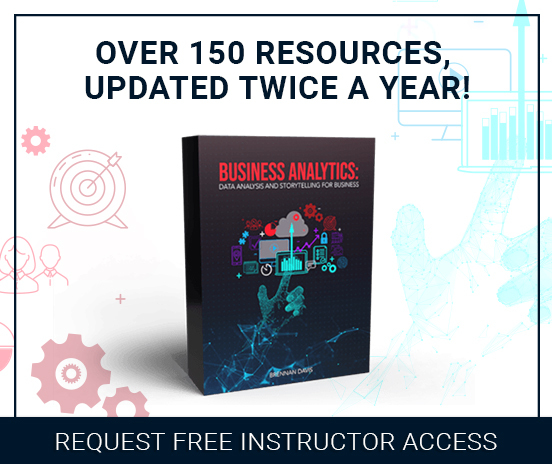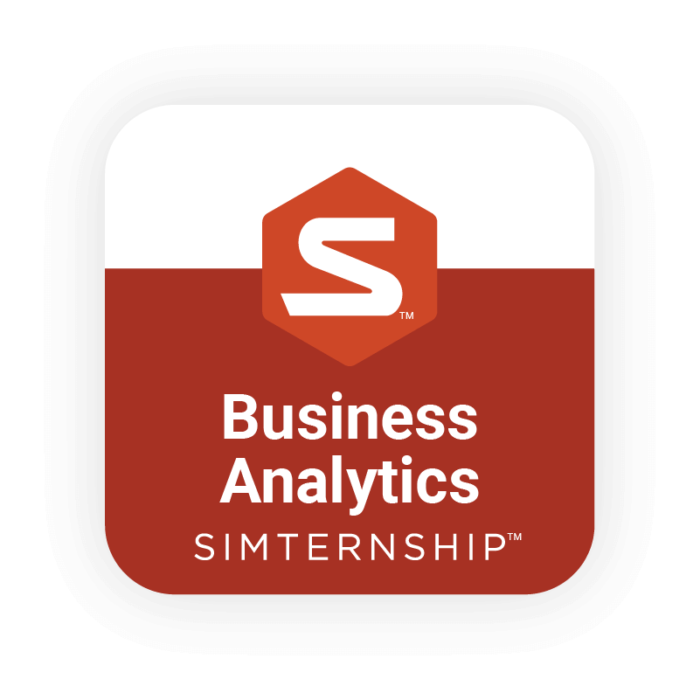The tables have turned. No longer are businesses waiting for students to graduate from an MBA program, then bring all the latest marketing theories and techniques to the company. In today’s fast-paced digital world, companies are asking business schools and digital marketing departments in colleges to make sure students are keeping up with the particular skillsets needed to compete as soon as they graduate. Theory has given way to practice, and that is nowhere more evident than in business analytics.
Given the importance of this topic, we wanted to know how teachers could do the best job of preparing students for eager employers. And while this article focuses on business analytics, these fundamentals could be applied successfully by teachers of other subjects as well.
Stukent asked Dr. Brennan Davis, author of the digital textbook, Business Analytics: Data Analytics and Storytelling for Business, to give us his best tips for teaching a business analytics course. We asked the same of other academic and industry leaders, then compiled their answers to create the list below.
Business Analytics Teaching Tip #1: Talk About the “Why”
Much of the content and purpose of a business analytics course is to acquaint students with the tools of the trade and make sure they know how to use them. Spreadsheets, databases, cluster analysis formulas, artificial intelligence, and machine learning — all of these and more are critical to the work of a business analyst.
Much less emphasis is given to the “why” part of business analytics, though. Our experts said it’s important to “go beyond the tools” and talk about the goals a client or employer is trying to achieve. Which questions are most important to ask?
Descriptive analysis can tell you what has happened. Predictive analysis provides insight into what is likely to happen in the future. Dr. Davis says that before determining what to do now, it’s important to understand what has happened already. Determining “why” allows analysts to be less reactive and more proactive. The best-performing companies (and schools) lead the way. They don’t just follow the path prescribed by others.
Business Analytics Teaching Tip #2: Give Students “Cheat Sheets”
No doubt, it’s important to make sure students work for the grade and for the knowledge the grade represents. Many of the most effective teachers we know, however, stress how absolutely essential it is to “help the lights turn on.”
Cheat sheets not only provide easy access to critical information, but they can also present relationships between concepts in a visually evocative way that elicits that always-welcome comment, “Oh, now I see.”
Top instructors know that cheat sheets are a “cheat” in a good way. They stack the odds in favor of learning. For professors concerned about “doing it for them,” one tip we heard was to provide cheat sheets that aren’t complete. Give the class a template to follow, but ask the students to complete their own copy.
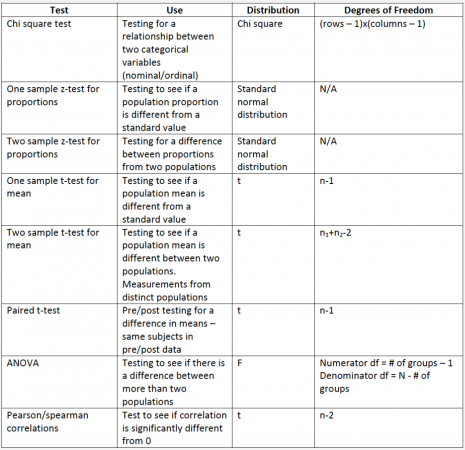
Business Analytics Teaching Tip #3: Teach the Fundamentals
It’s tempting to get excited about recent developments in digital marketing and to expound on how the new tools or platforms can supercharge the work of a business analyst. Sometimes, though, the excitement of new things can detract from the importance of the fundamentals.
Dr. Davis’ textbook stresses the three legs of business analytics:
Collect and organize data
Analyze the data collected
Create an accurate story to transmit the lessons from that data
Whatever else students take away from their business analytics course, they should be well-grounded in the basic processes. Tools come and go, but the fundamentals stay steady. They provide a solid base the business analyst can rely on.
Business Analytics Teaching Tip #4: Demonstrate the Tools and Platforms
Just as writers are encouraged to “show, don’t tell,” the experts we spoke with unanimously agreed on the importance of demonstration. Just telling students about the tools, then expecting them to go experiment with them, usually doesn’t elicit very good results.
This may sound like bragging (and it probably is), but that’s one of the stand-out features Stukent offers. Professors can go way beyond demonstration by leveraging our simulation platforms (like Stukent’s Marketing Analytics Simternship™) to give students a feel for what it’s really like to use the actual tools they’ll be using on the job and make informed decisions that have real-world consequences.
Business Analytics Teaching Tip #5: Highlight the Differences Between B2C and B2B
The student who secures employment with Target Corporation as an analyst of consumer behavior will necessarily be focused on a whole different set of concerns than the student employed by a company that sells to Target. Well-informed graduates will enter the workforce with a firm grip on the differing needs of B2C and B2B operations.
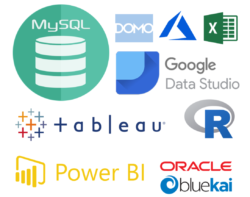
Our professors noted brand awareness, advertisement recall levels, brand loyalty, and audience segmentation as examples of critical concepts for business-to-consumer marketers. When the target audience is other businesses, though, the primary needs shift to tasks like lead scoring, prospect modeling, retention rates, and insights to help with hyper-personalization. Many needs of B2C and B2B companies are similar, for sure, but they can also be vastly different.
Business Analytics Teaching Tip #6: Stress the Importance of Testing
Testing is an essential part of business analytics, and it’s a requirement for any scientifically valid experiment. Theories are a dime a dozen, but a theory confirmed by valid tests is a moneymaker.
Not too many years ago, most business decisions were made based on experience and intuition. With a wise and battle-scarred captain at the marketing helm, companies could make good headway. Today, however, marketing managers have tools at their disposal that yesteryear’s marketing teams would’ve been amazed and overjoyed to see.
Rather than mail 10,000 letters with one subject line to part of your list and 10,000 letters with a different subject line to another part of your list … then wait days or weeks to gauge response and declare a winner, you can send hundreds of thousands of emails instantly and begin immediately to see how many are opening each version of the offer … AND whether they are taking the actions you asked of them.
And that’s just a very basic example. Correctly deployed, testing methods and tools can help you identify the segments of your best audience, create campaigns that serve their needs, and measure the effectiveness of your actions. The old adage of “rinse, wash, repeat” certainly applies here. Digital marketers should always be testing.
Business Analytics Teaching Tip #7: Select a Digital Textbook
Yes, the Stukent strategy is based on the concept that digital marketing courses need current information, but our belief isn’t the only reason business analytics professors everywhere have begun adding our digital textbooks and real-world simulations to their list of top-tier resources.
Simply put, it’s impossible for printed books to keep up with the changes in business analytics. Digital textbook updates aren’t a luxury, they’re quite often a requirement for any teacher wanting to provide current information.
To get a firsthand look at how a digital textbook and hands-on simulation can enhance your effectiveness, you can request free instructor access to Dr. Davis’ digital textbook here: Business Analytics: Data Analysis and Storytelling for Business.
Business Analytics Teaching Tip #8: Make Sure Your Textbook Is Vetted by Industry Experts
Not only must a proper business analytics textbook be in a digital format that can be updated regularly, it should be vetted by people who KNOW the topic. The Stukent digital marketing textbook, for example, is vetted by data scientists, data analysts,and analytics experts from companies like Google, Tesla, and Capital One. Those testimonials are, of course, excellent social proof of the value of the Stukent brand, but there is more to the need for vetting than that.
Remember the statement from Dr. Davis about businesses now running “ahead of academics”? When you choose a digital textbook vetted by industry experts, you know the textbook presents the kind of information capable of preparing your students for the knowledge, skills, and abilities those industries need.
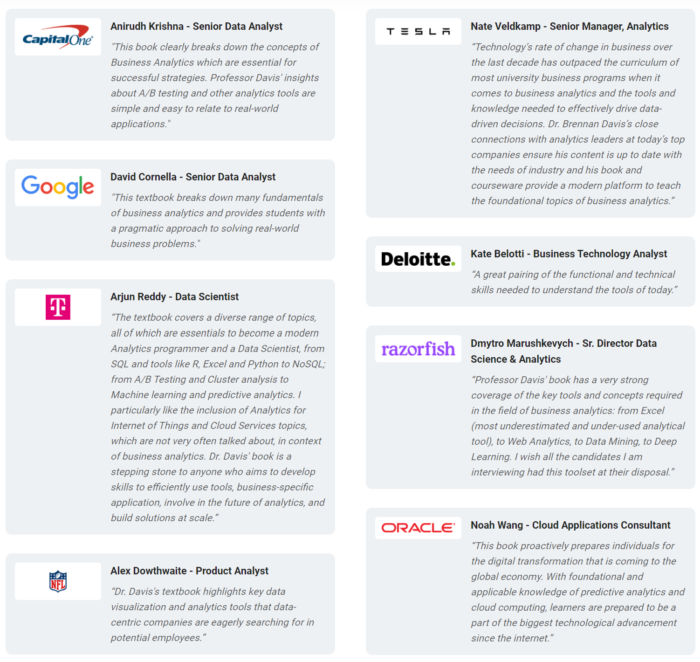
Business Analytics Teaching Tip #9: Direct Your Students to Qualified Analytics Certification Programs
Which of these students do you think will get the job, all other qualifications being equal: The student who completed requirements for a bachelor’s degree in digital marketing, or the student who went beyond the bachelor’s degree to obtain certifications from Google and Microsoft? You probably didn’t need much time to think about that question.
The business analytics professors we speak with invariably point to certification programs like those offered by Google, Microsoft, Coursera, and edX as crucial to not only a student’s employment prospects, but to a student’s ability to understand how the tools they’ve been introduced to can help solve real-world business problems. Yes, Stukent simulations provide students with a certificate of completion to display online or to feature on a resume. This is another great way of providing your students with analytics certification to help them qualify for a job.
Business Analytics Teaching Tip #10: Couple Learning With Application
Once you’ve introduced the fundamental concepts of business analytics and demonstrated the tools of the trade, the next indicated step is to require students to demonstrate their own understanding by using the concepts and the tools themselves.
Many teachers have told us that Stukent simulations provide the perfect path for applied learning to happen. Because Stukent’s Business Analytics Simternship™, for example, can be bundled with the Stukent business analytics resource package, instructors can easily observe students’ progress and guide them as needed. That’s a huge leap from the old do-it-on-your-own procedure, where the teacher had little insight into what happens outside the classroom.
Business Analytics Teaching Tip #11: Introduce Students to Online Resources Tracking Current Developments
There are plenty of websites and blogs that cater to online marketers. That’s both a blessing and a curse. It’s way too easy to get lost in the search for sites you like or to collect a list so long you can’t follow them all and still get your work done. By providing students with a list of recommendations, you can make sure they know where to go and why to go there.
A great starting point is the Stukent blog. We track digital marketing news daily and prepare a monthly report of top stories to help keep marketers informed. You should not only list digital business news sites, though, but also include sites specific to business analytics and other topics you teach.
Here are a few of our current favorites:
- Stukent Blog
- KD Nuggets
- Quora’s analytics page
- Occam’s Razor
- Kissmetrics Blog
- Forrester Customer Insights
Note that we’ve listed a well-rounded list of six. Professors say any more than seven is usually too many and under five is too few. You want to provide a starter list, not a full list. Eager students will add their own favorites but should keep the total to ten or fewer.
The total number of URLs on the list isn’t the most important factor, however. A list of three sites the student keeps up with weekly is way more helpful than a list of nine that are seldom visited.
Business Analytics Teaching Tip #12: Update Students on Career and Internship Opportunities
Never assume your students know anywhere close to as much as you know about career opportunities in digital marketing and business analytics. Many of them are keenly aware of the job possibilities, but many aren’t. You may even be surprised to find that some of your students know only that they love to study internet marketing and want to work “somewhere in the field,” but they have only a vague idea of the employment options available to them.
The best teachers not only liberally sprinkle references to the real-world applications of the subject matter into their lesson plans, but actively work with local employers to develop internship positions for their students.
Business Analytics Teaching Tip #13: Encourage Students to Follow Industry Experts
You may have noticed that our list of recommended resources in Tip #11 included the personal blog of Google’s present digital marketing evangelist, Avinash Kaushik. The present gig isn’t the only position Kaushik has held, though. He is a data analytics superstar who is on the advisory boards for both the Rotman School of Management (Toronto) and the University of California at Irvine’s program on web intelligence.
Kaushik is an associate instructor in web analytics for the University of British Columbia, the recipient of awards from the American Statistical Association and the Web Analytics Association, is a co-founder of Market Motive, Inc., and previously worked for companies like Intuit, DHL, and others. In other words, Avinash Kaushik is someone every student of business analytics should follow. Additional experts recommended by digital marketing professors include Jeff Sauer, Mary Owusu, and Kaiser Fung.
Noe that our list in #11 also includes the blog of serial internet marketing entrepreneur, Neil Patel. Unlike Kausik, though, Patel invites other industry leaders to contribute their insights on a variety of digital marketing topics. Point out to your students that blogs like Patel’s Kissmetrics can be excellent spots to get introduced to thought leaders they admire and want to follow.
Business Analytics Teaching Tip #14: Utilize Stukent Expert Sessions
Not only are Stukent video lectures by industry experts excellent resources to view in the classroom, you can assign them as part of your homework requirements, and go-getter students can access them for self-study. Stukent Expert Sessions provide presentations on a level with those you might otherwise need to travel thousands of miles and pay plenty of dollars to attend at a national event.
For example, the session below delivers a clear and concise introduction to SQL for marketers by Shubham Goel, featured contestant on the Netflix Original “The Circle” and cofounder of the IERP Company. Goel tells students why they should care about SQL, then describes ways SQL can be leveraged to accomplish tasks involving data points. Like the other Stukent Expert Sessions, this one packs a big punch in a relatively brief amount of time.
Business Analytics Teaching Tip #15: Engage Students With Simulations
We’ve mentioned simulations elsewhere, but they deserve a focus point of their own. We get plenty of praise for our consistently-updated digital textbooks, but professors tend to rave over simulations more than any other part of the Stukent package of resources for teachers and professors.
When you engage your students with Stukent’s Business Analytics Simternship™, they have access to real-world simulations and scenarios that challenge and test their mastery of the necessary skills. The Stukent Business Analytics Simternship simulation, for instance, calls on students to …
- Extract and clean big data
- Practice cluster analysis and data integration
- Implement A/B testing
- Optimize key performance indicators
- And more!
Most instructors only need to ask themselves one question to quickly become sold on the idea of adding a simulation to the coursework: “Would a real-world simulation have helped me learn more and quicker when I was younger?” Our professors say Stukent simulations help the instructor, help the student, and help businesses by preparing students to do the work they’ll be called on to tackle … starting on day one.
Analytics Teachers, We Salute You
The world needs more people capable of performing the often complex tasks required of a data analyst. Analytics professors stand in the gap between the supply and demand for qualified analytics experts. We know you could be working fulltime in the industry and earning a substantial income — but you’ve chosen, instead, to help prepare others for that work than to take it yourself.
Stukent wants to help make your job easier by providing free instructor access to our business analytics courseware, including over 150 instructor resources and regular updates. Bundle the Stukent Business Analytics Simternship simulation with the digital textbook, and you’ll be amazed at the results. Claim your free access via the brief form on this page: Business Analytics: Data Analysis and Storytelling for Business.

